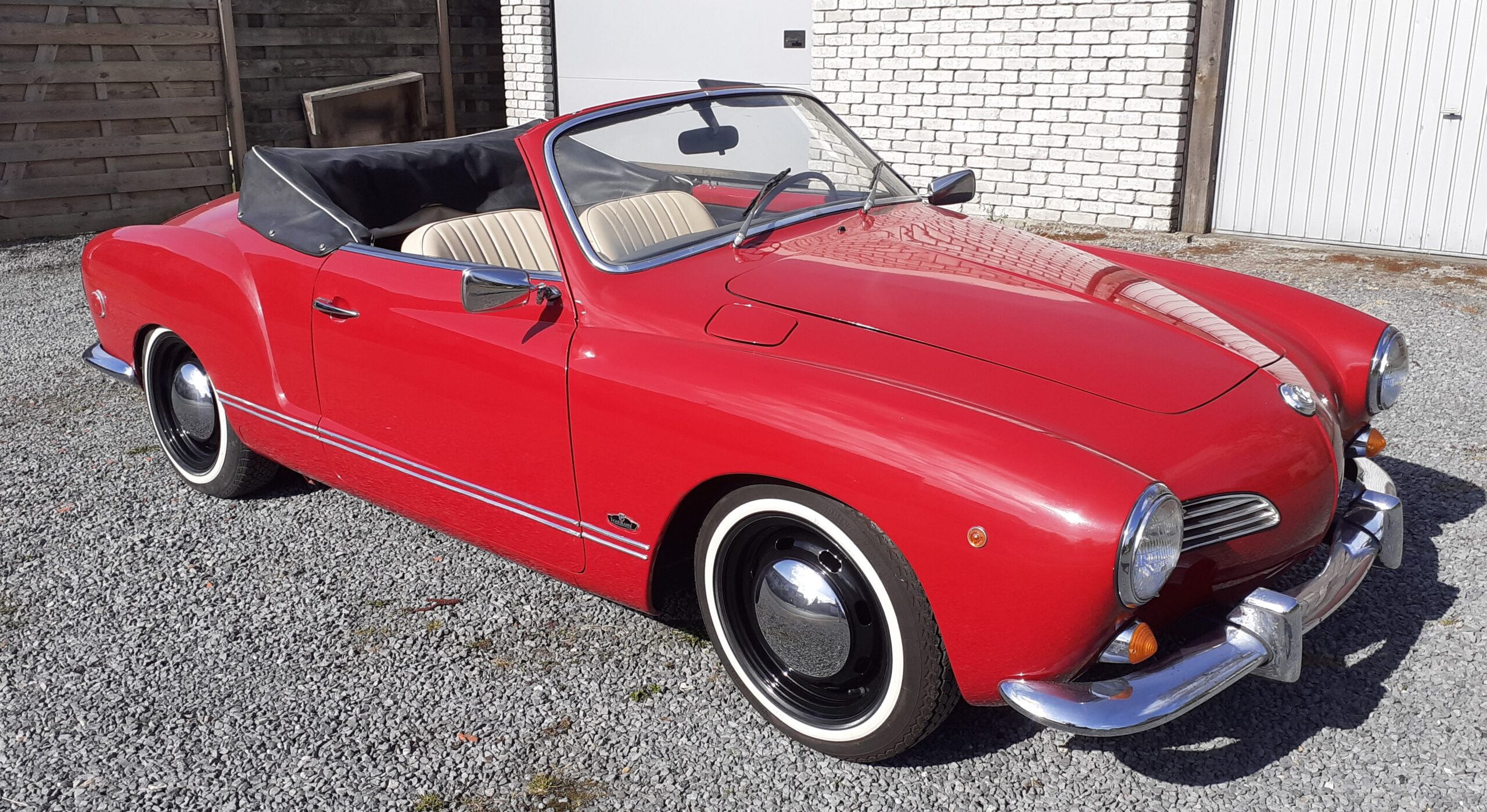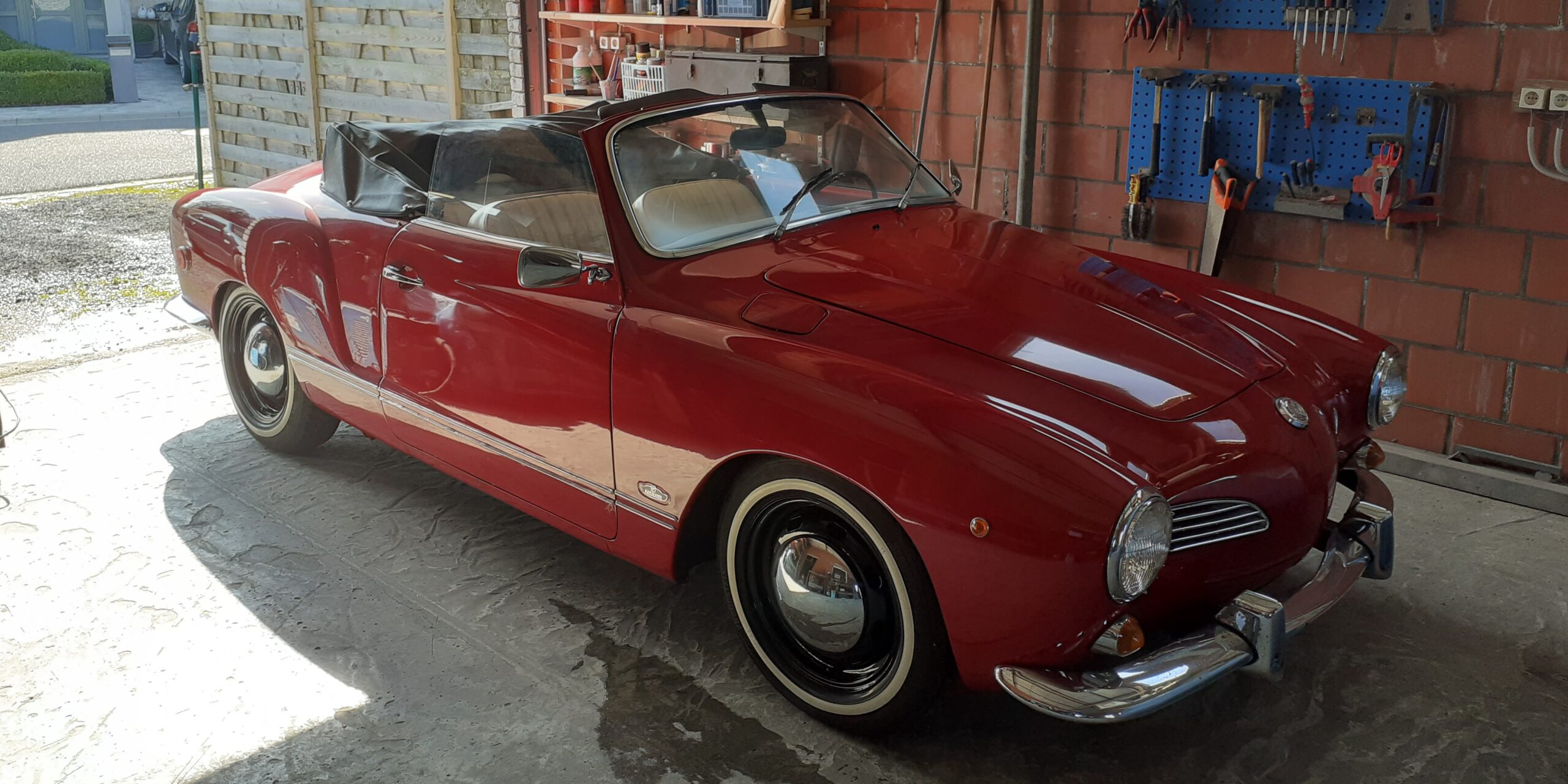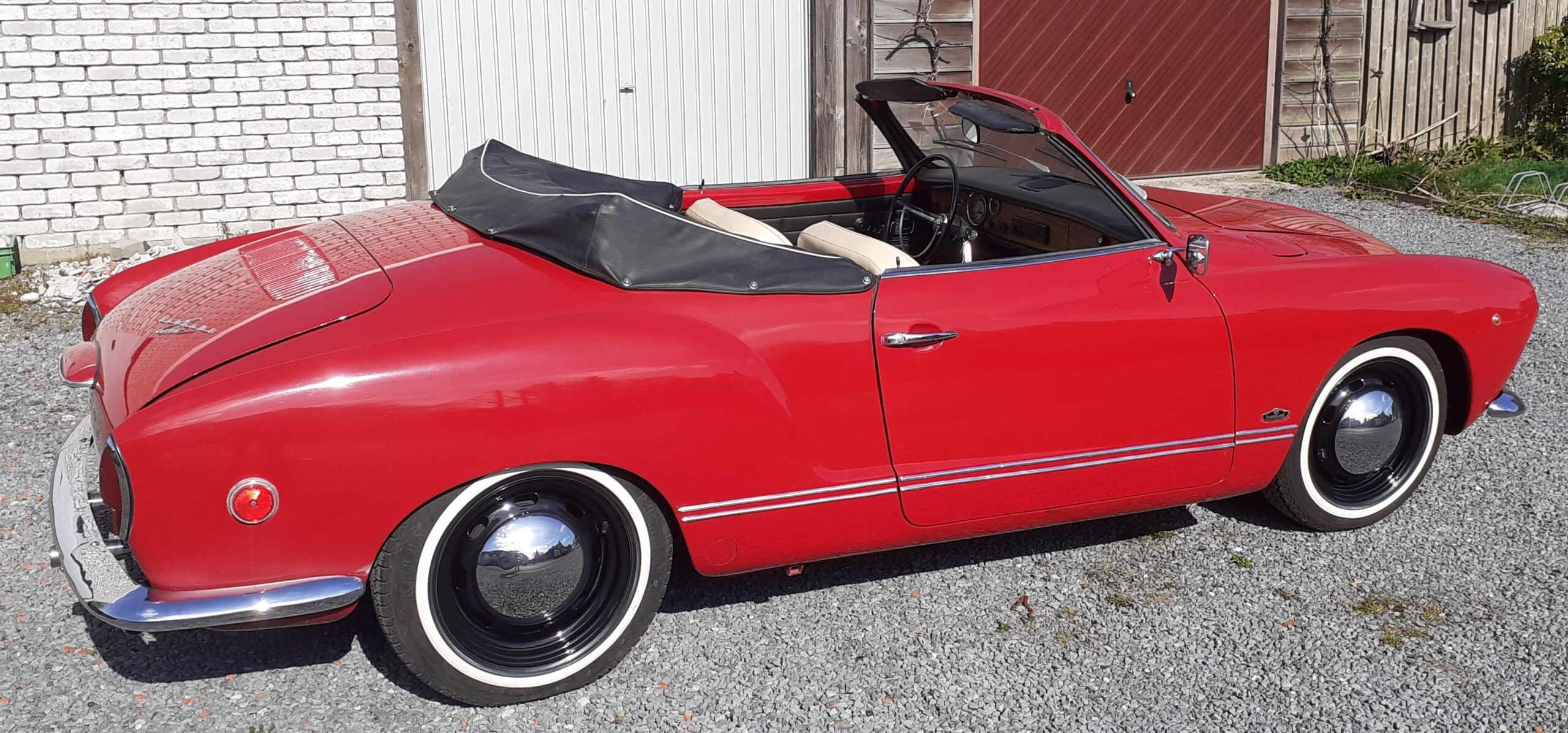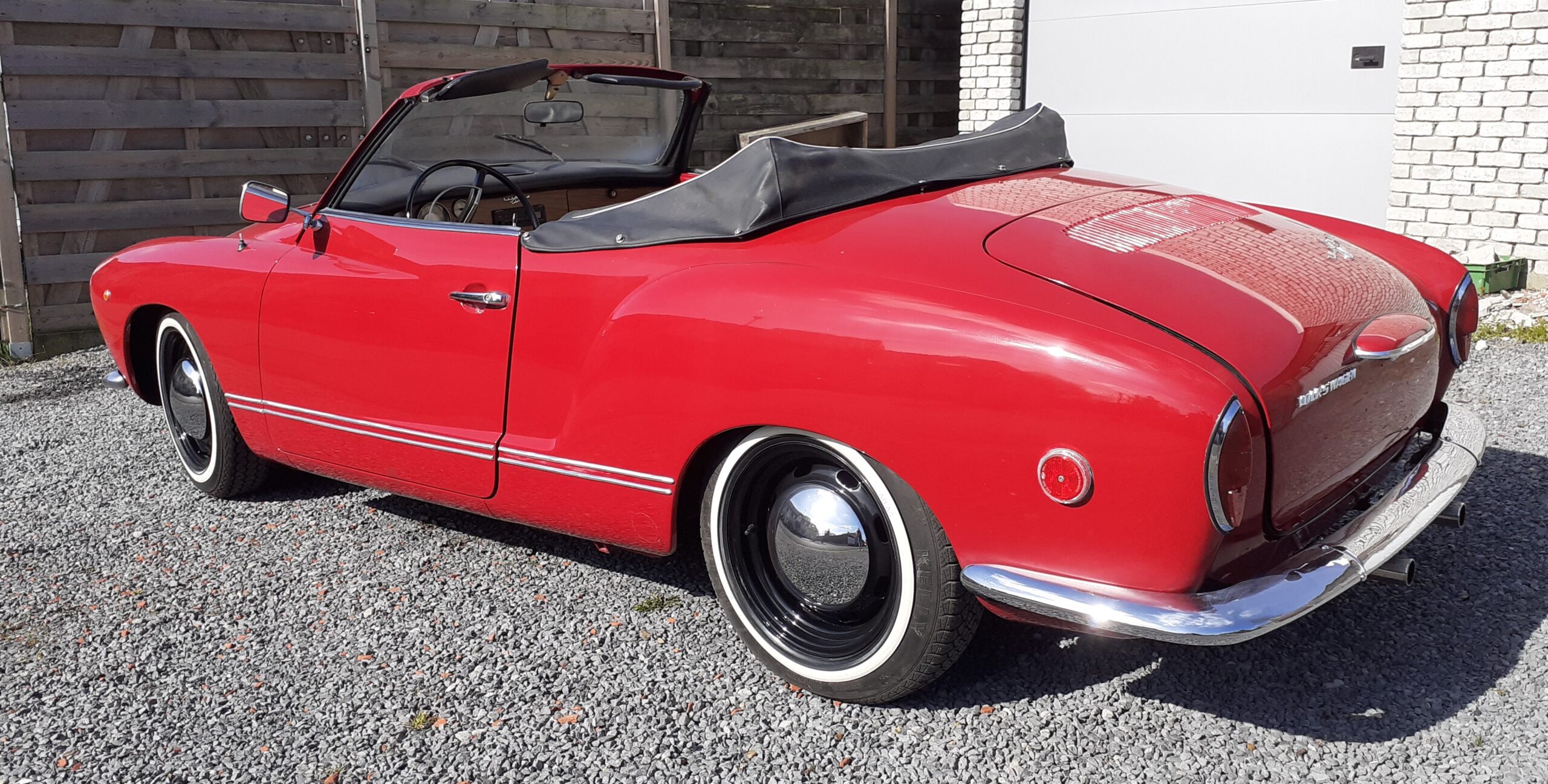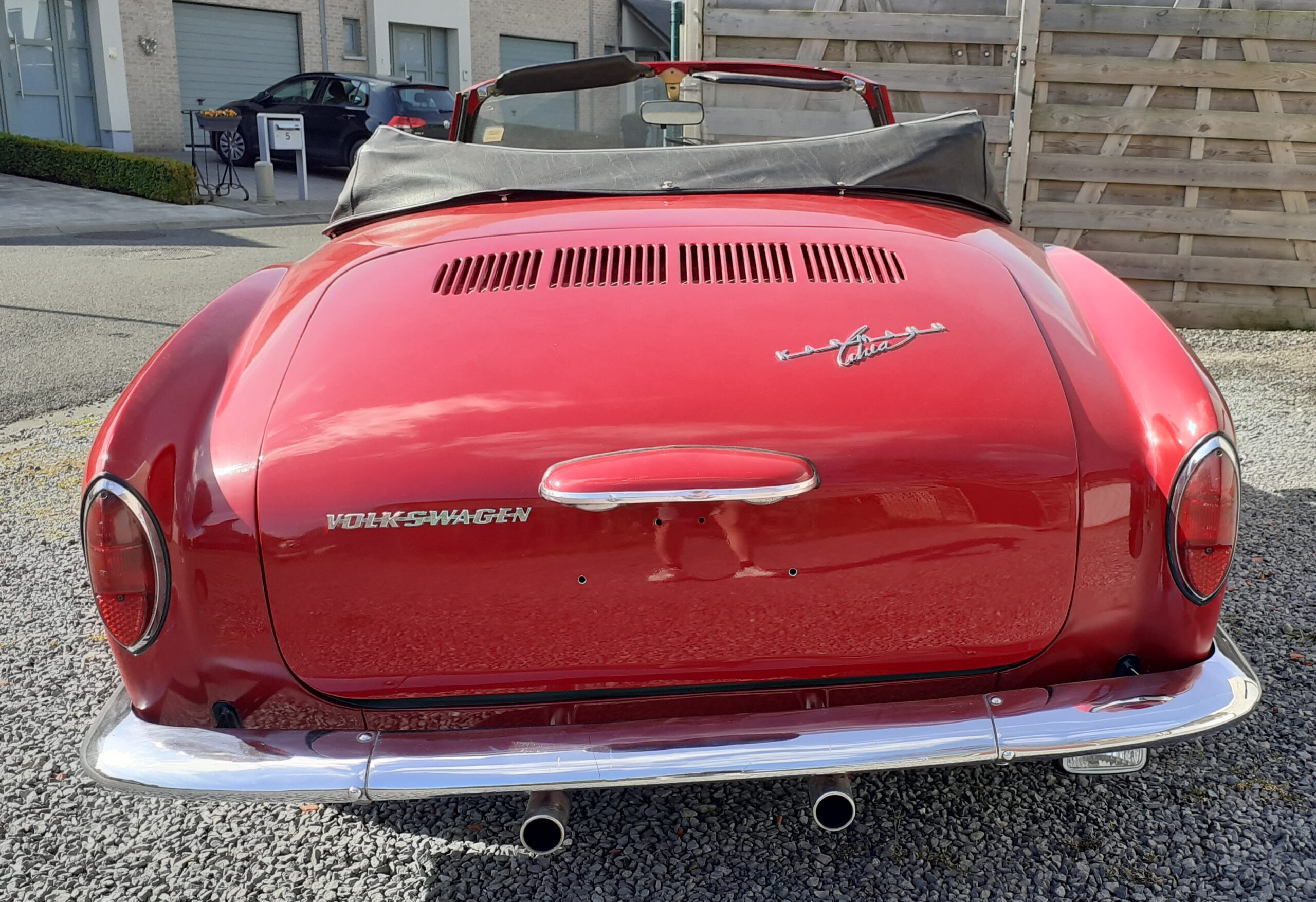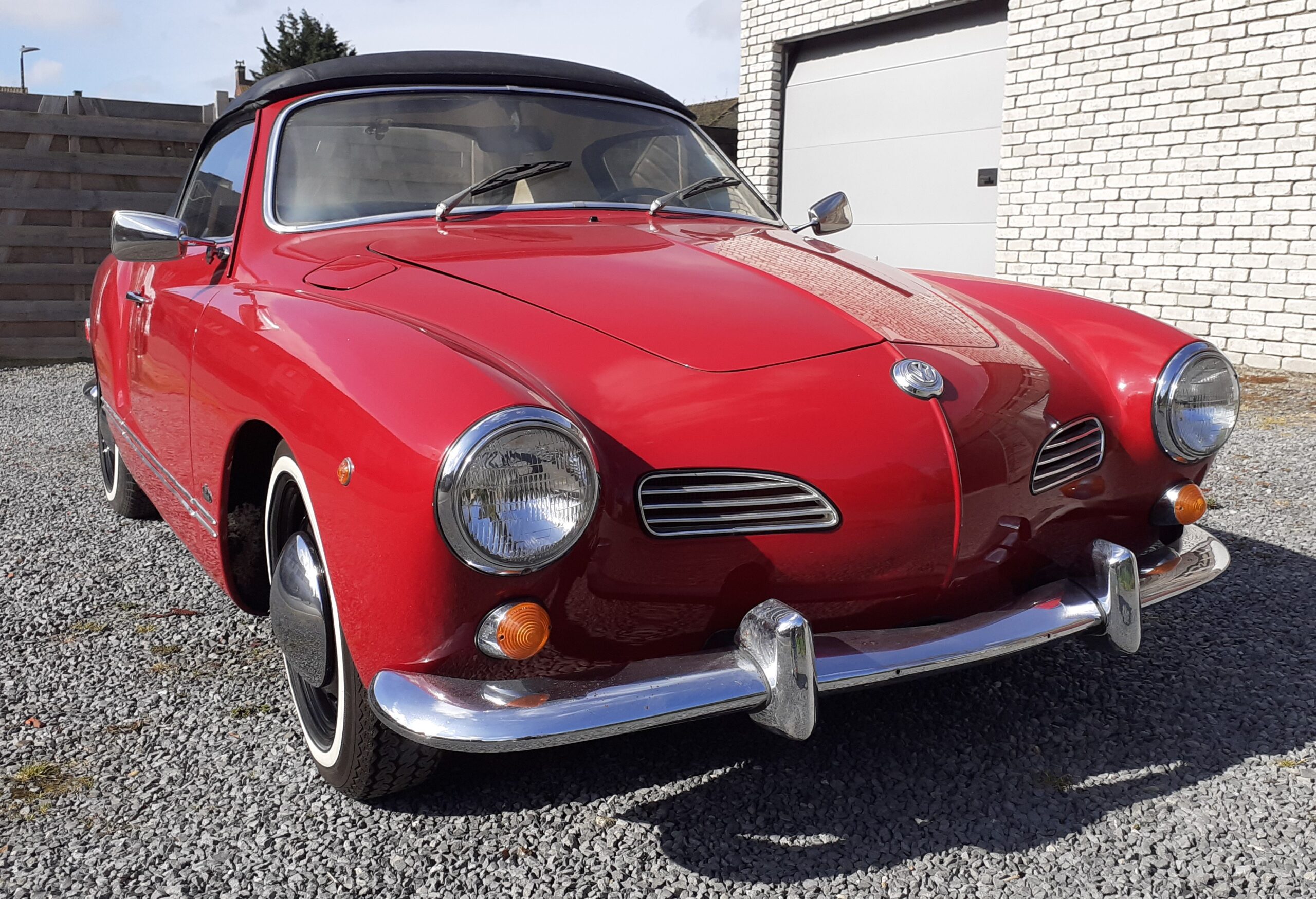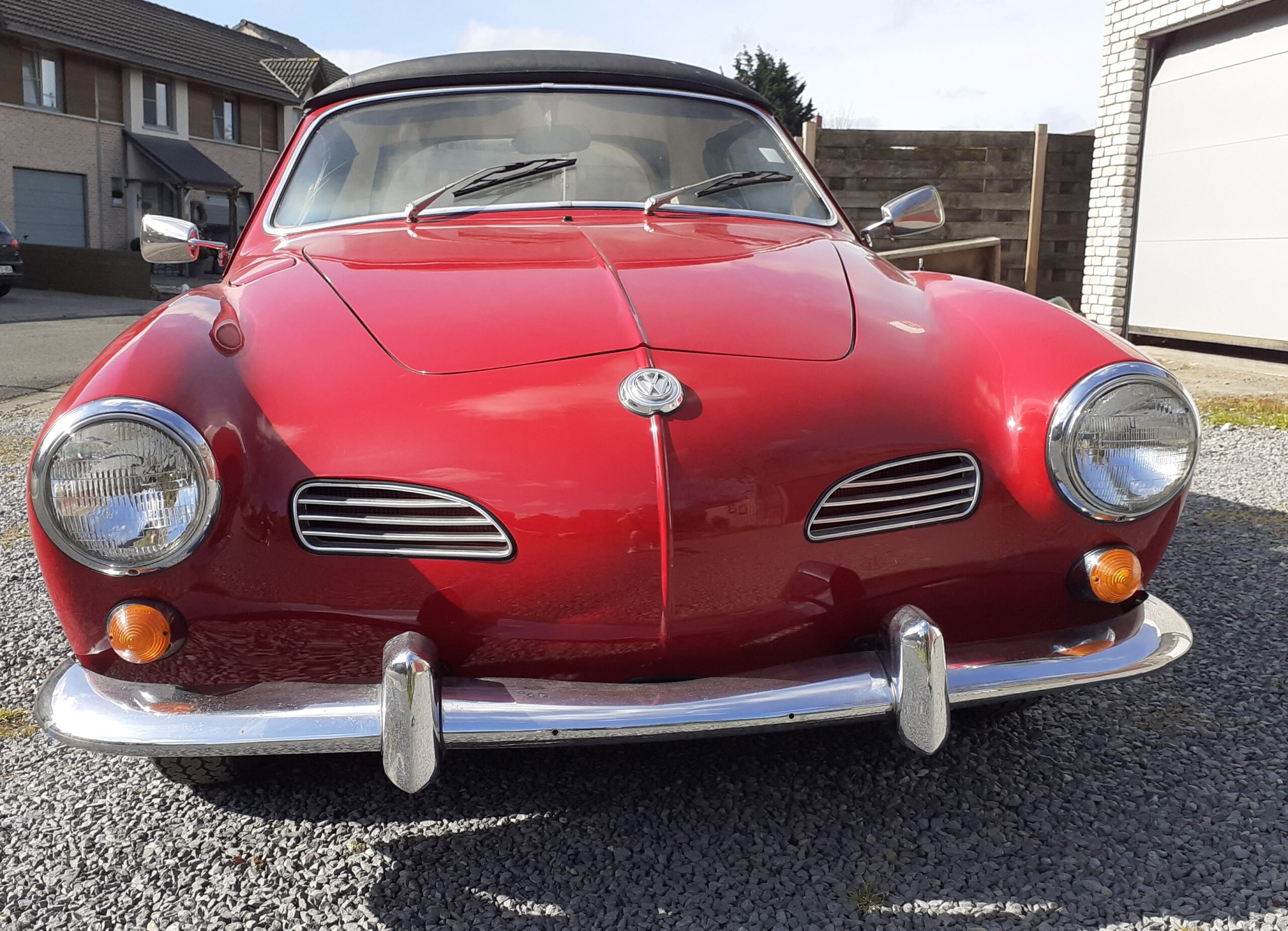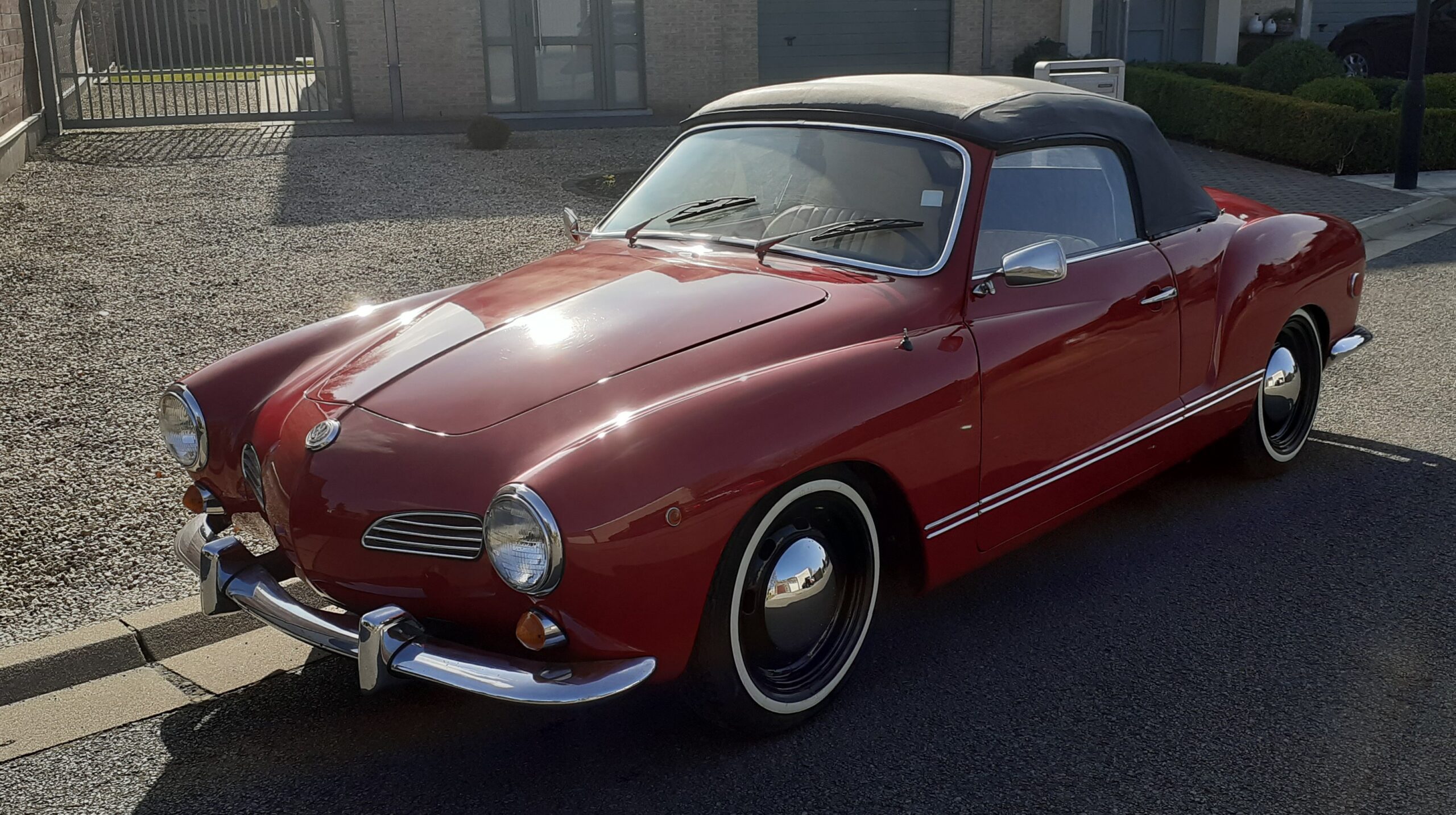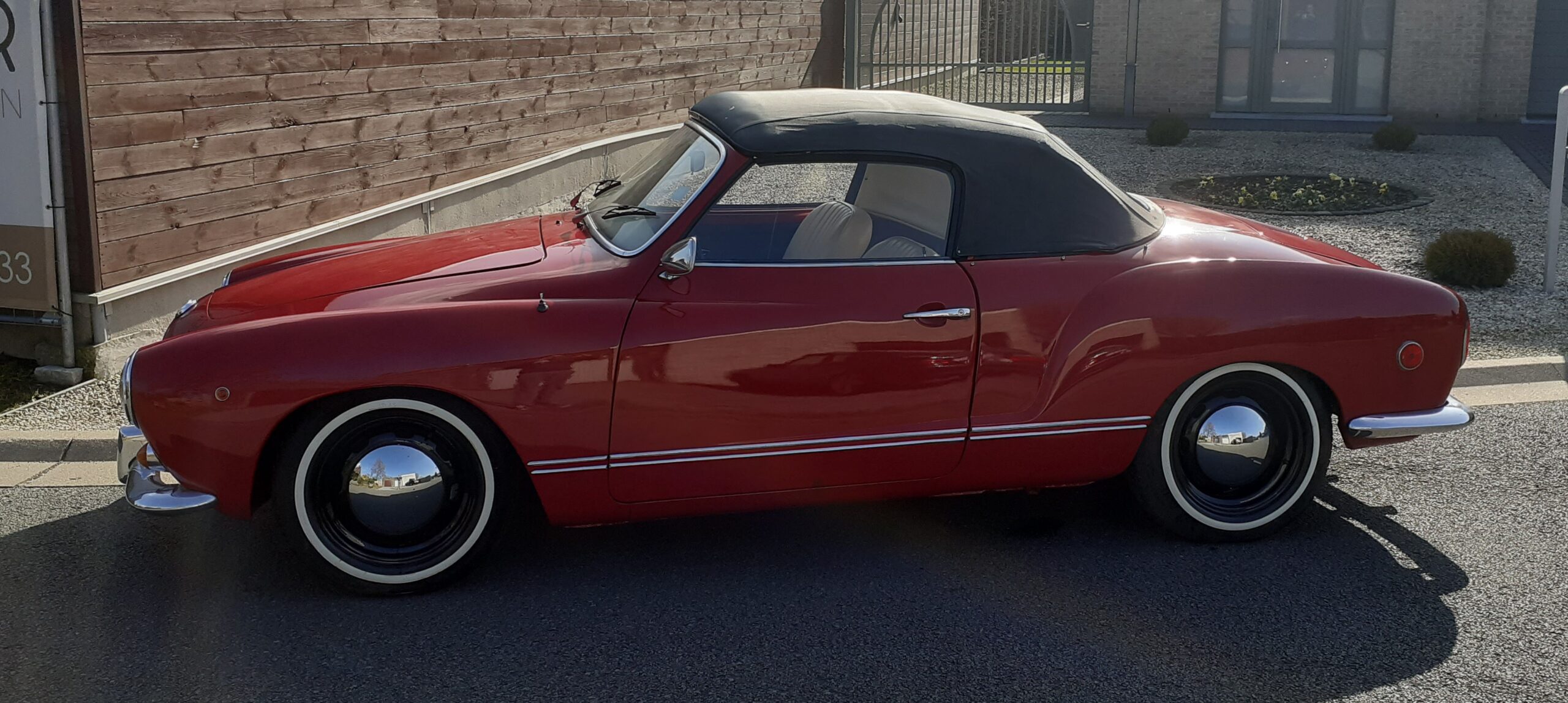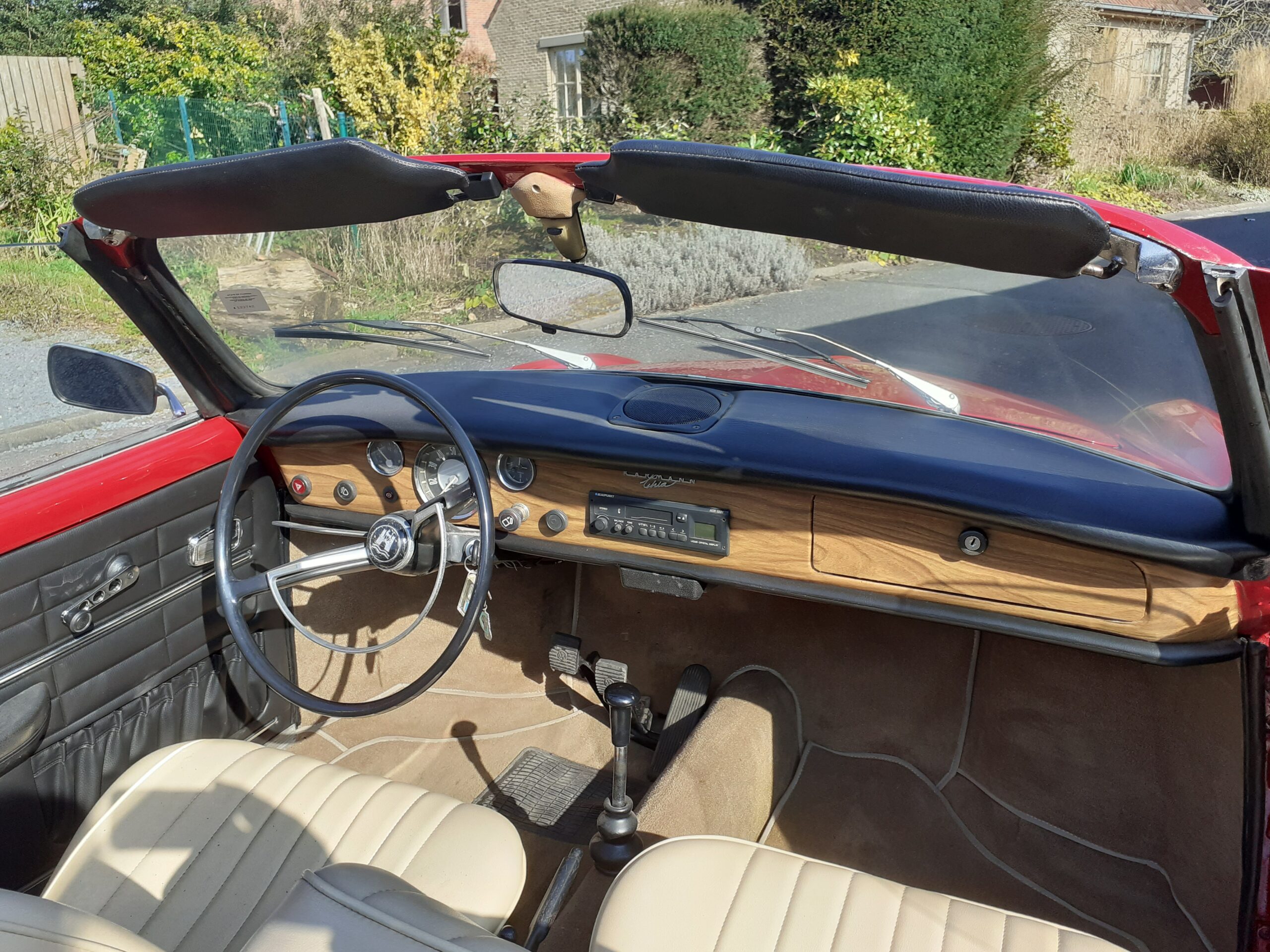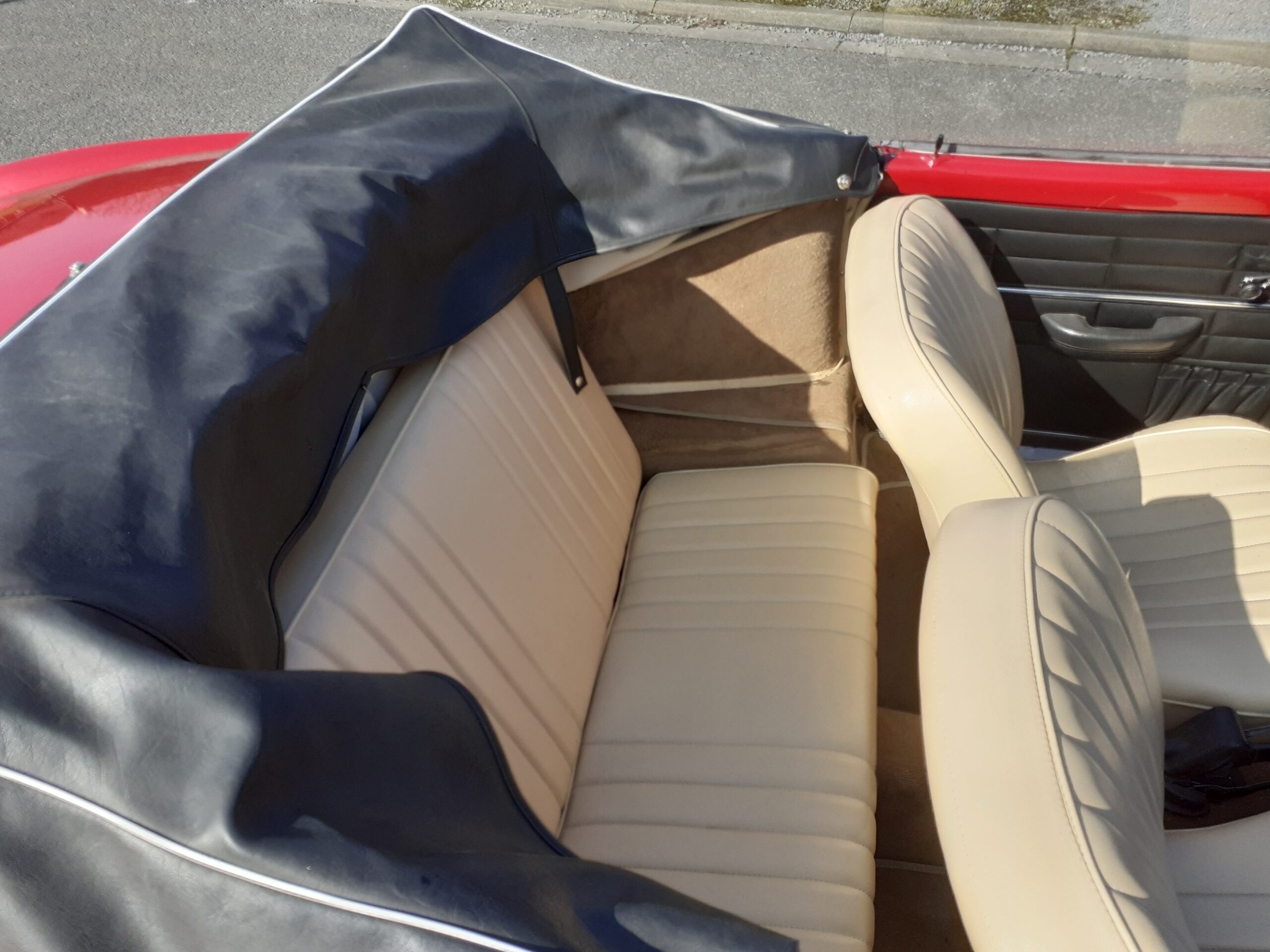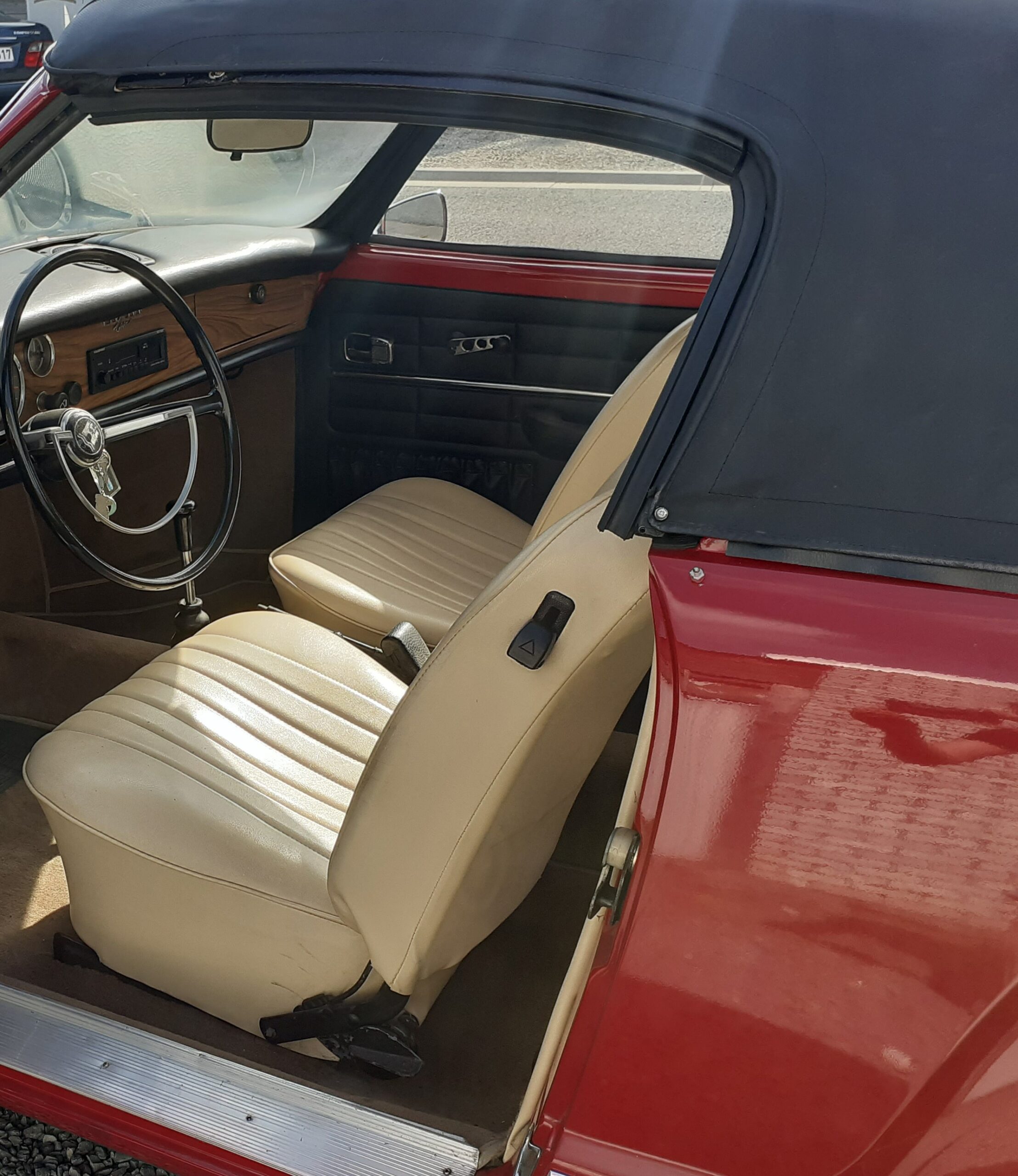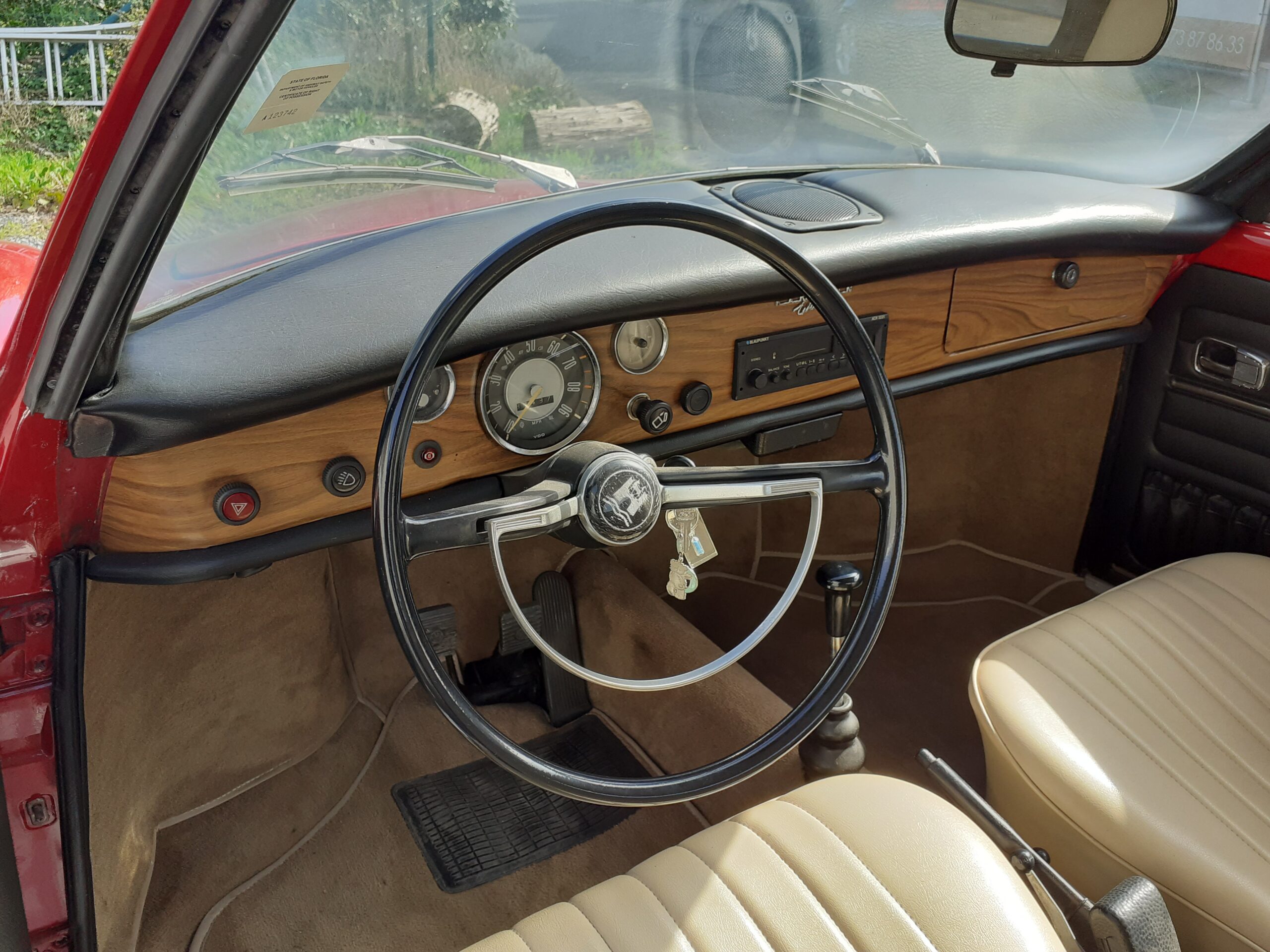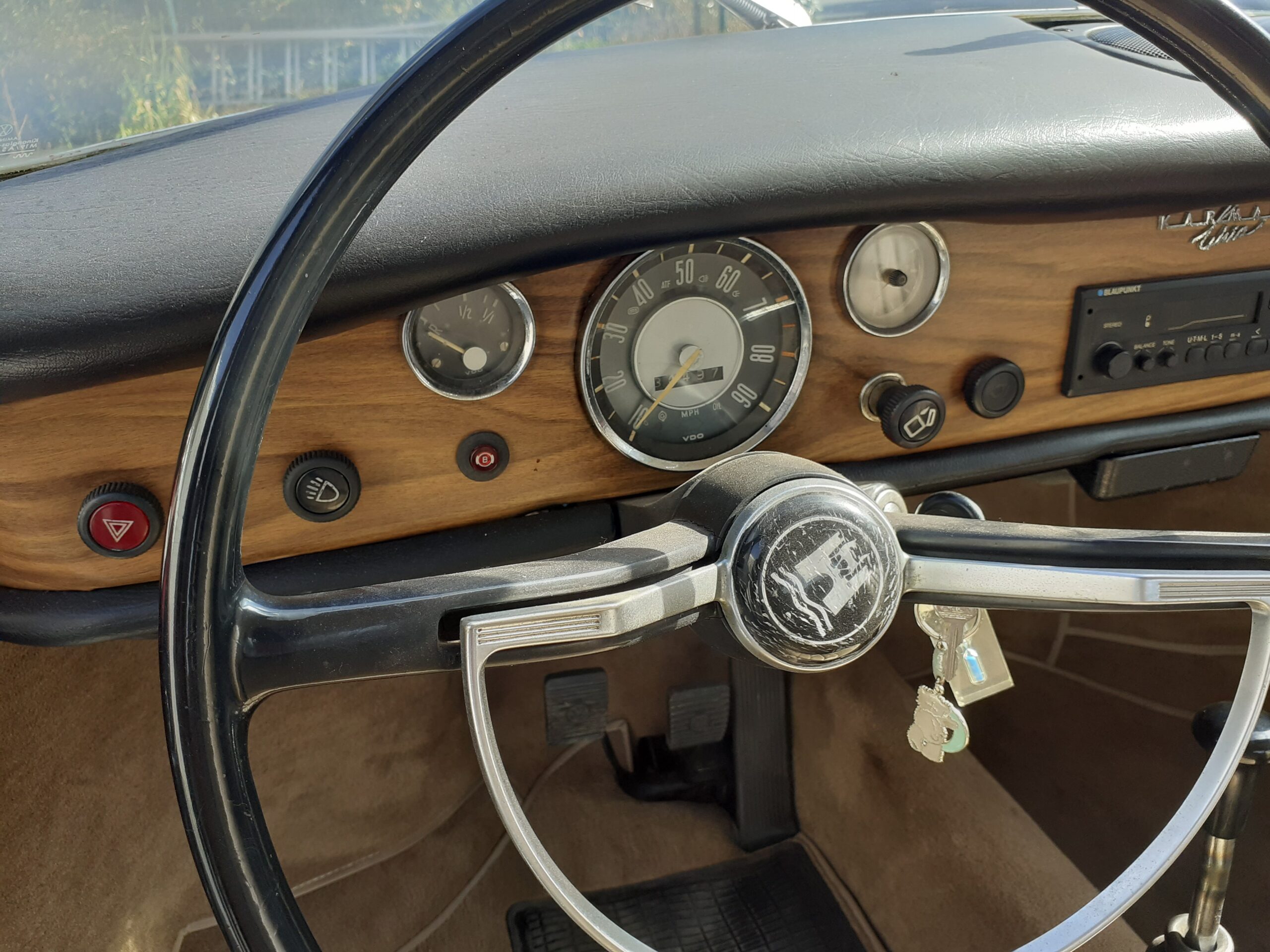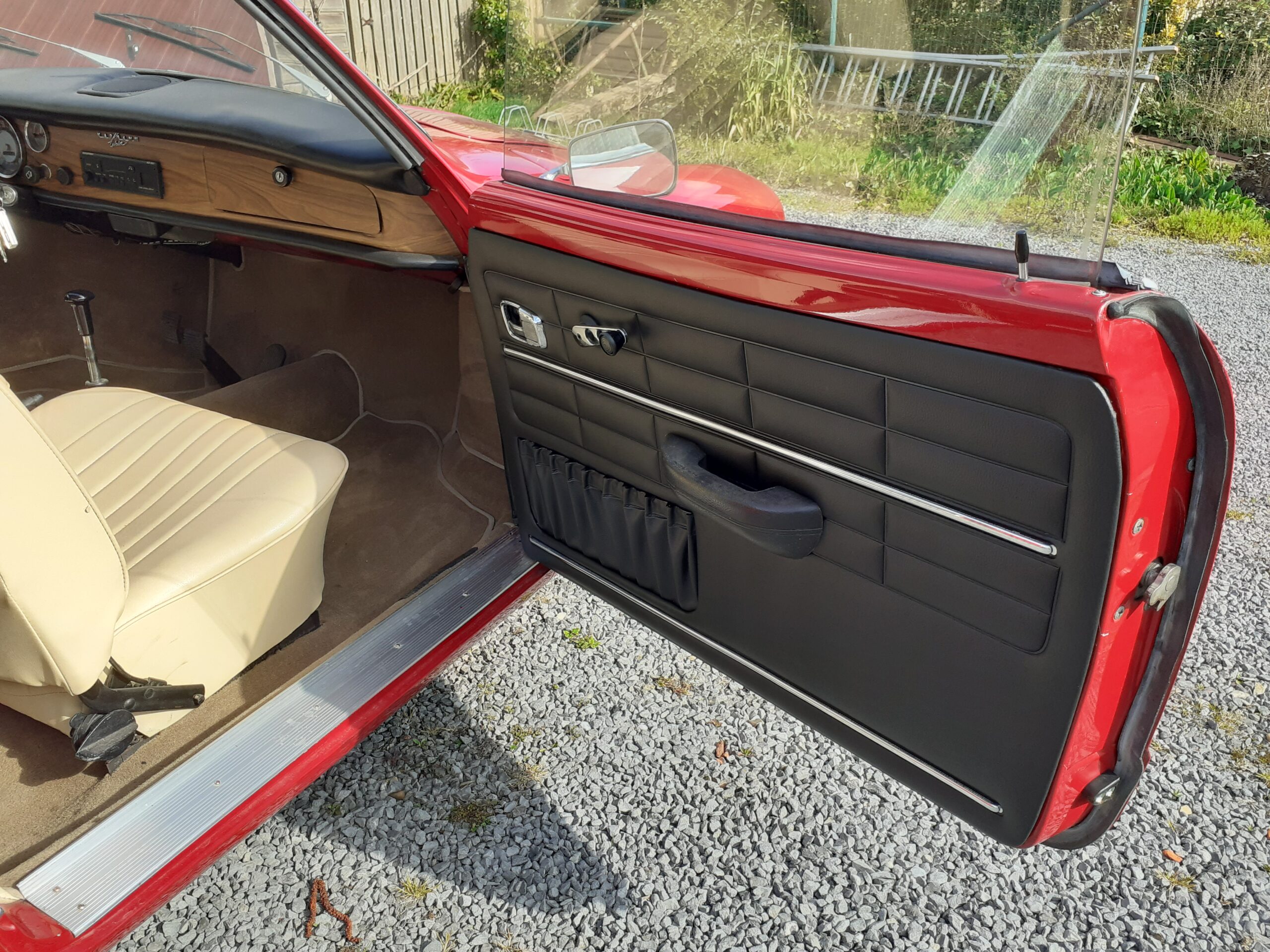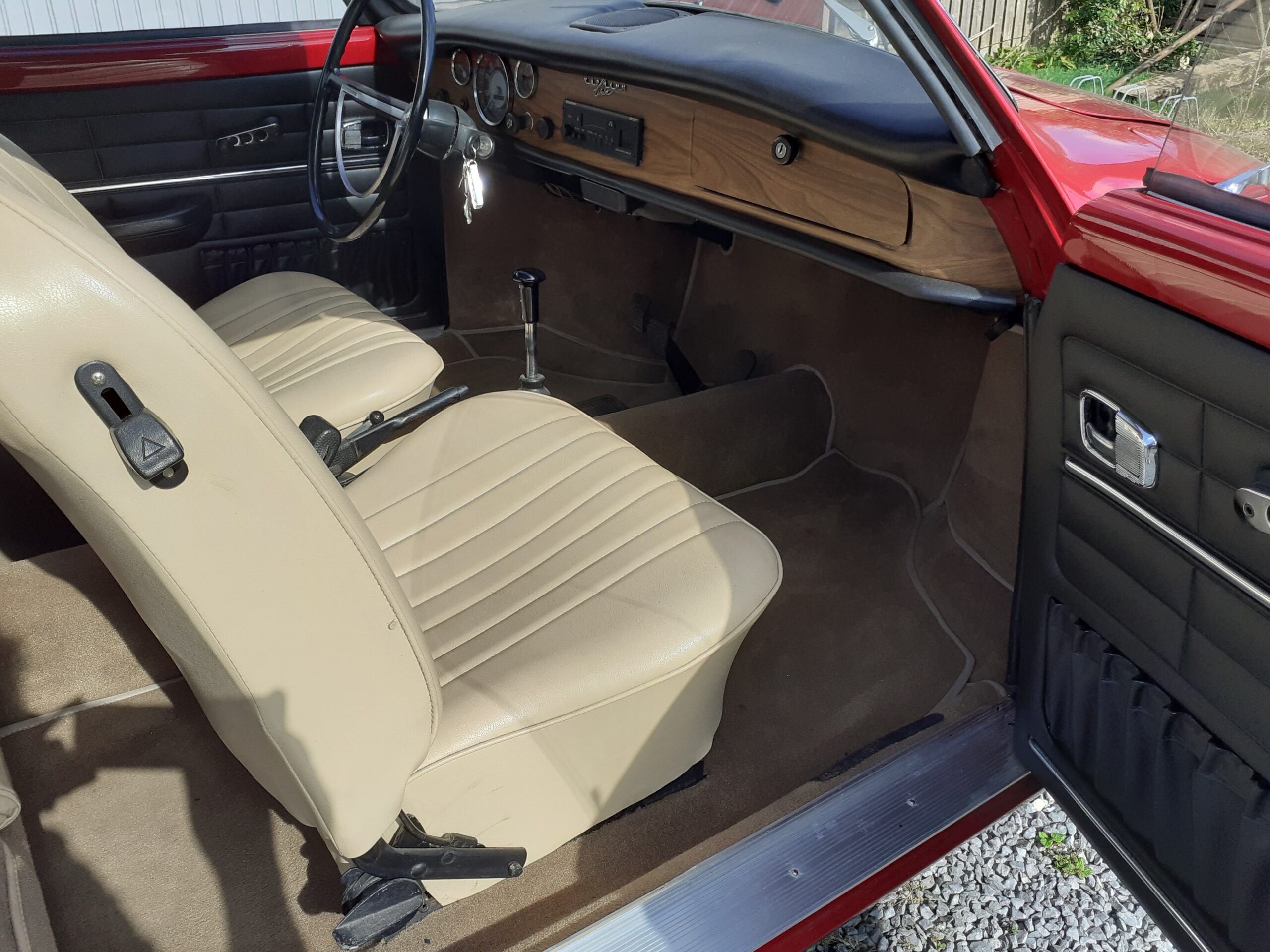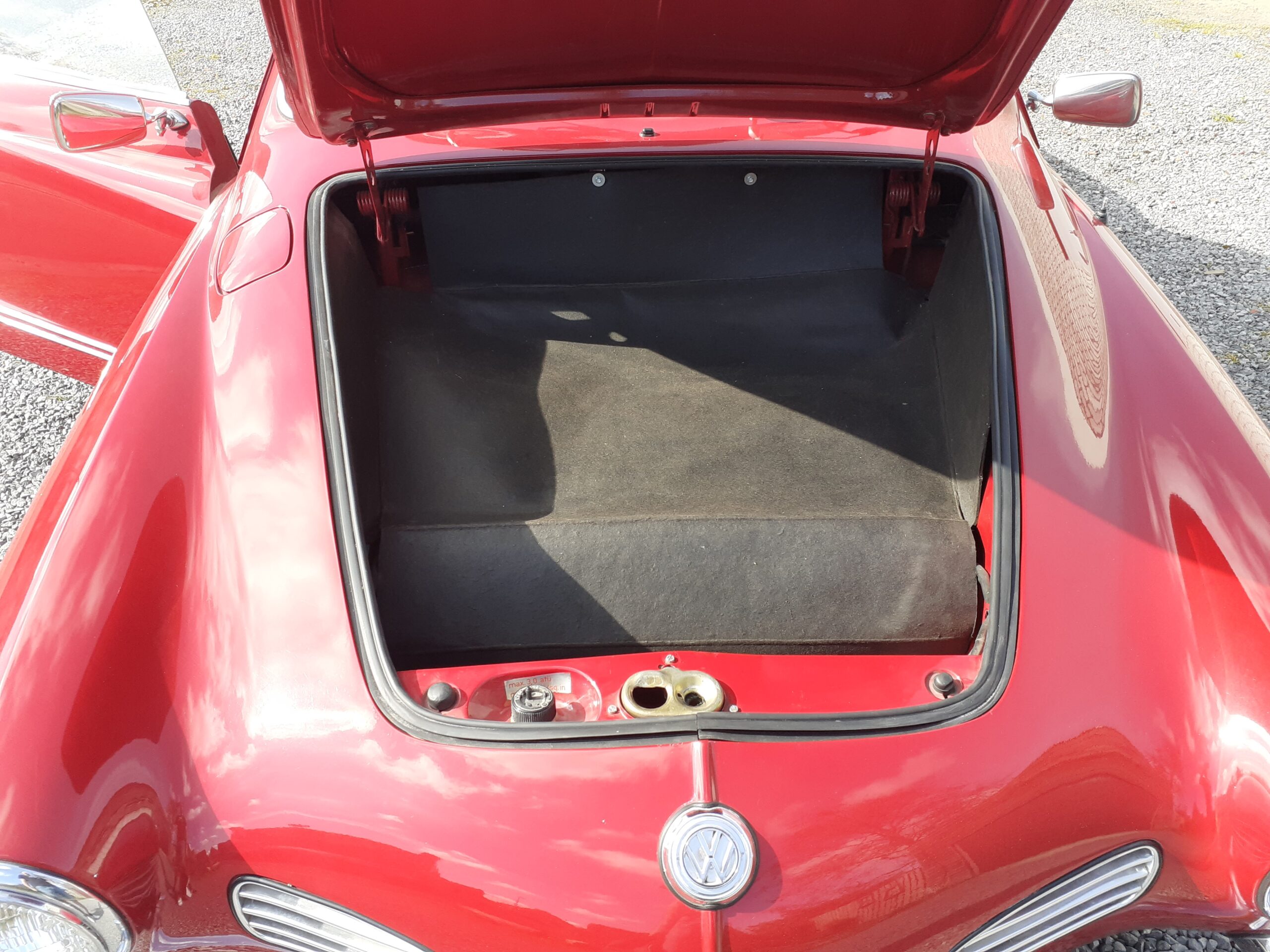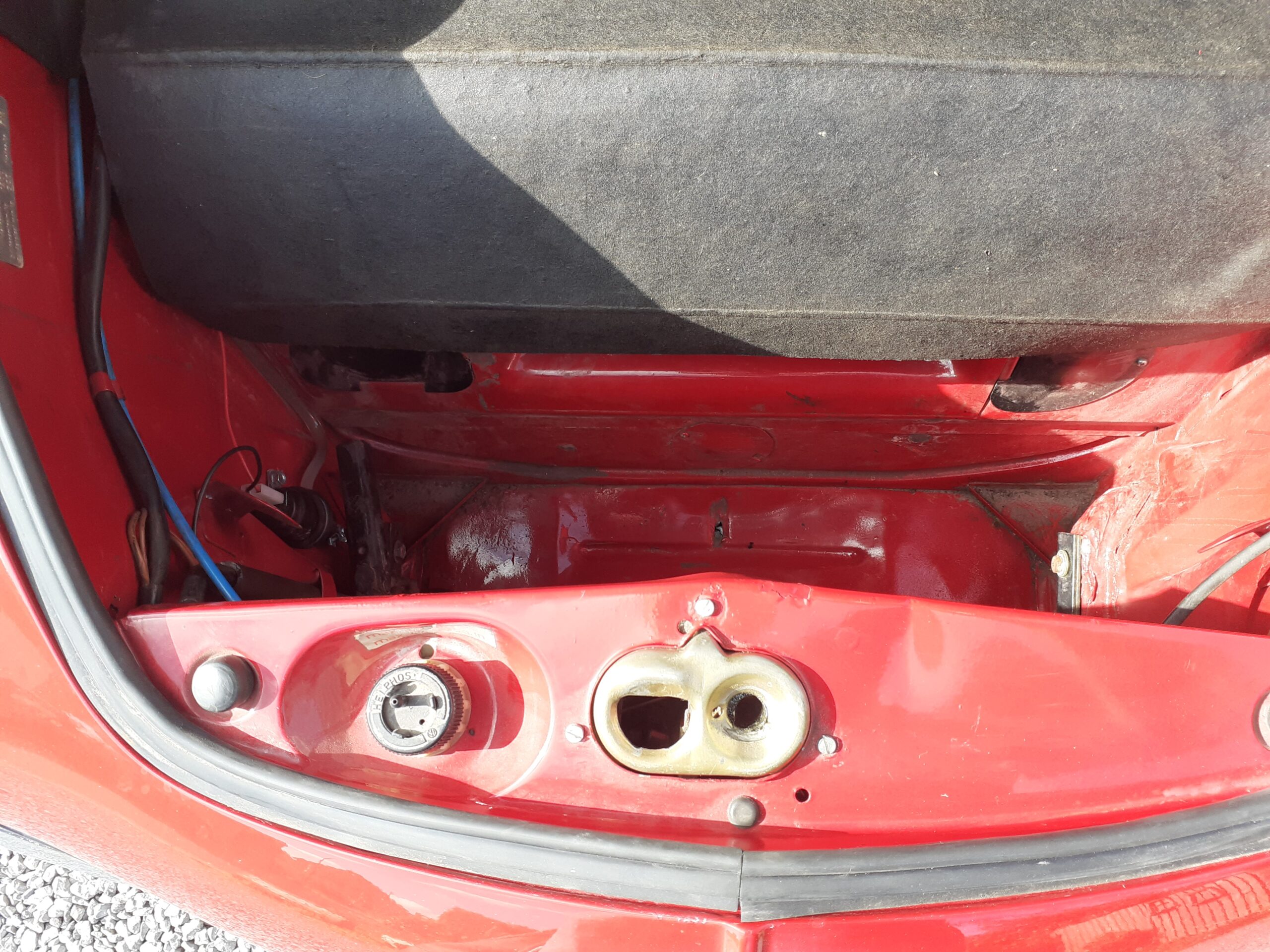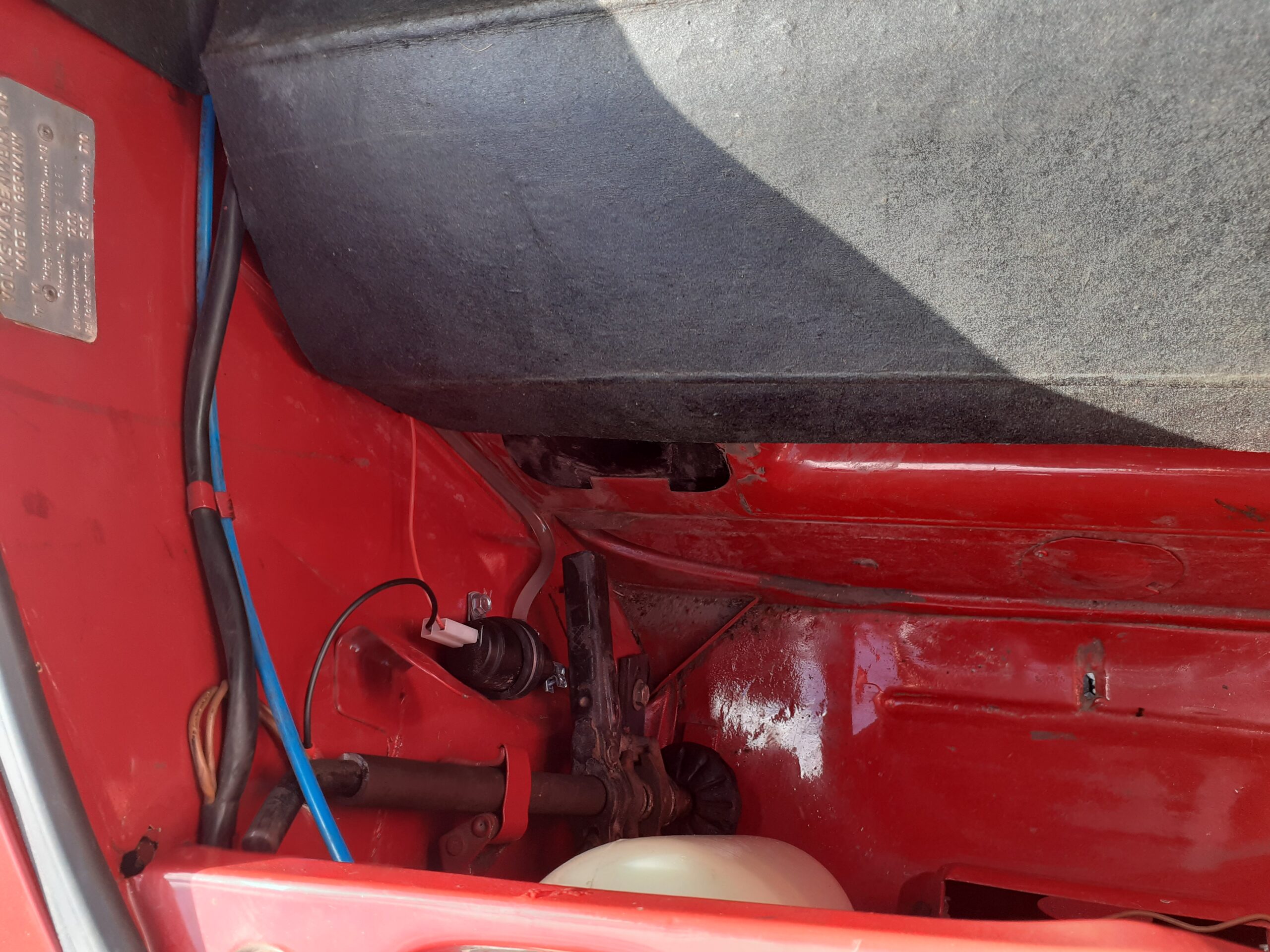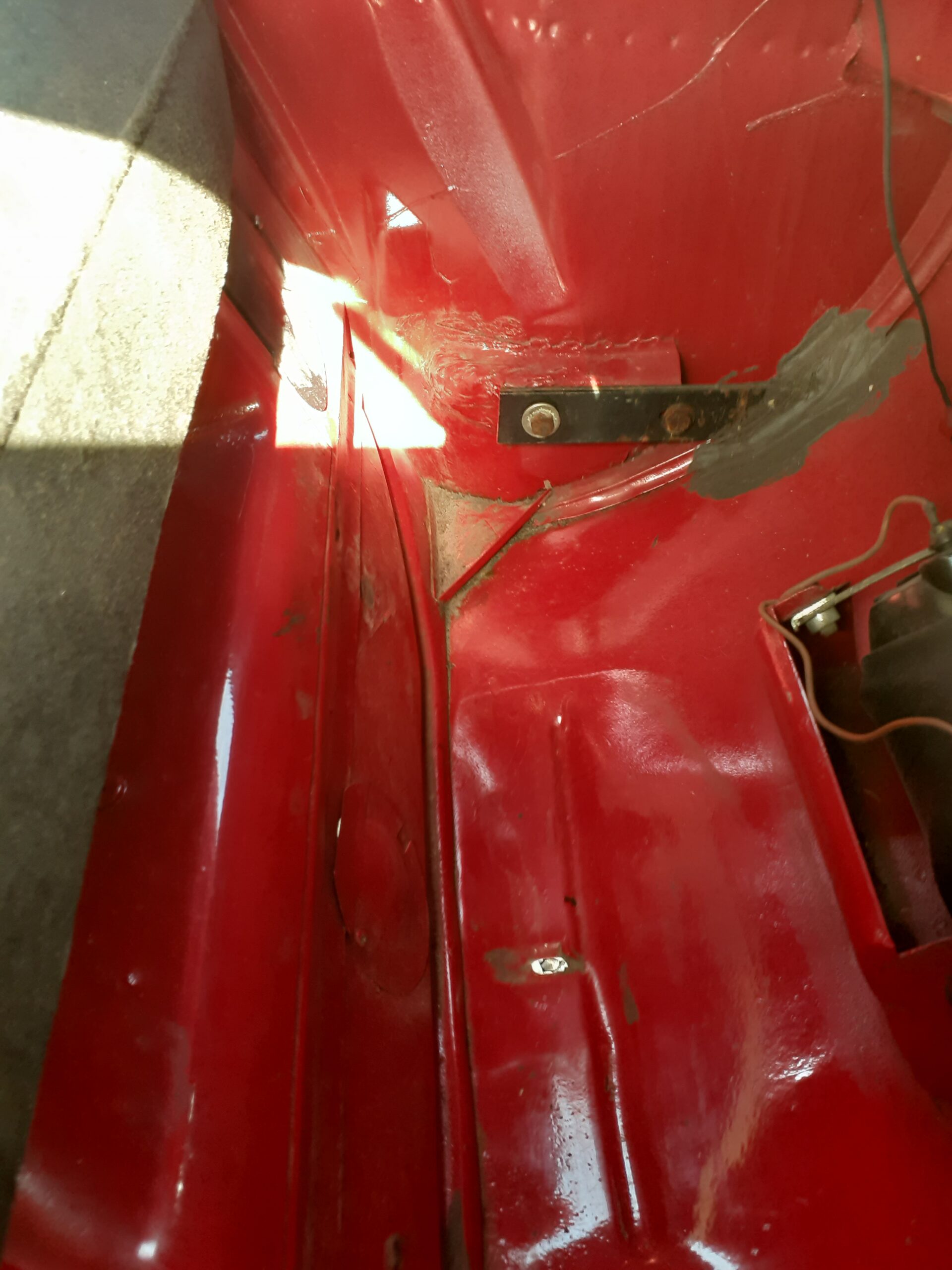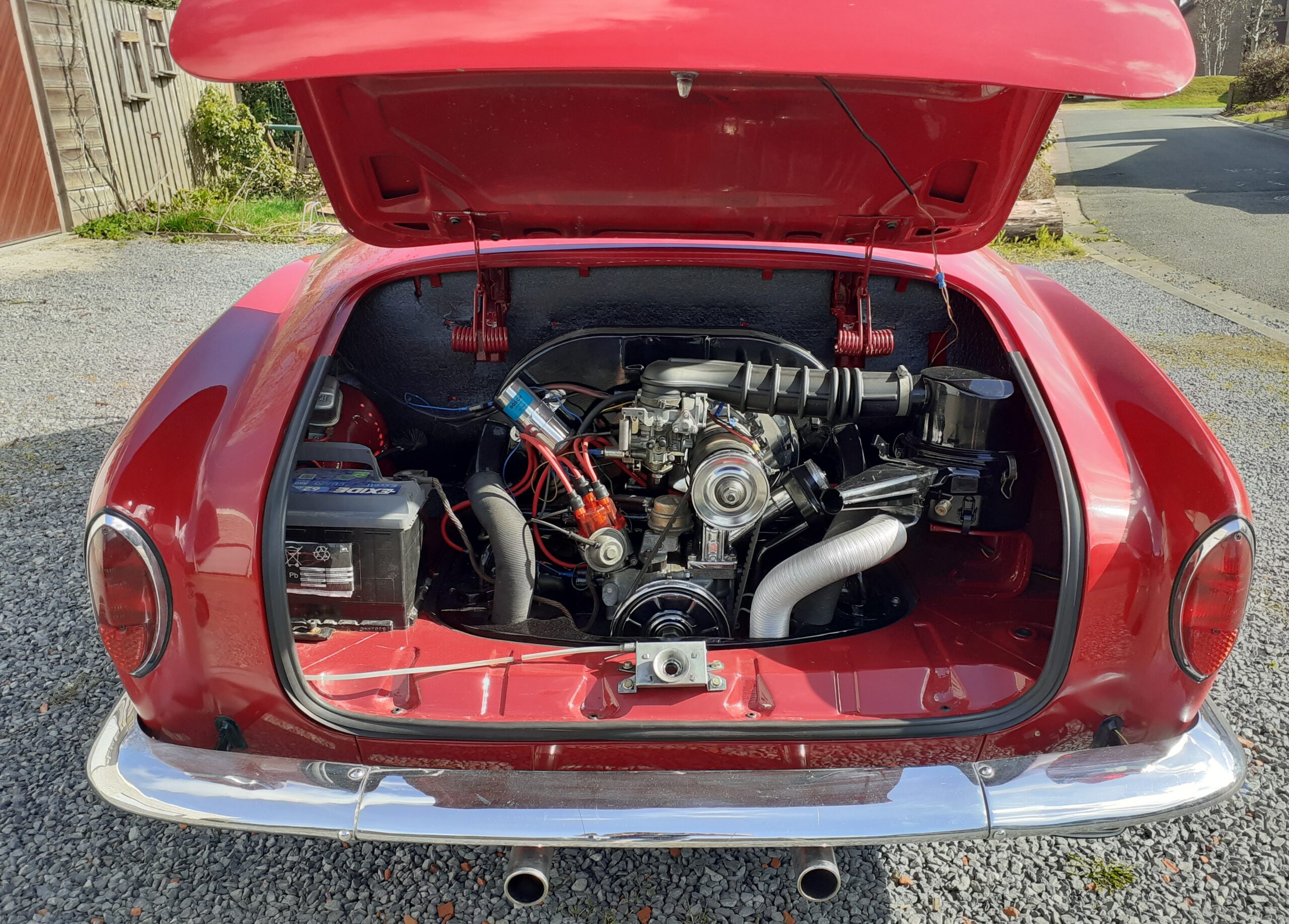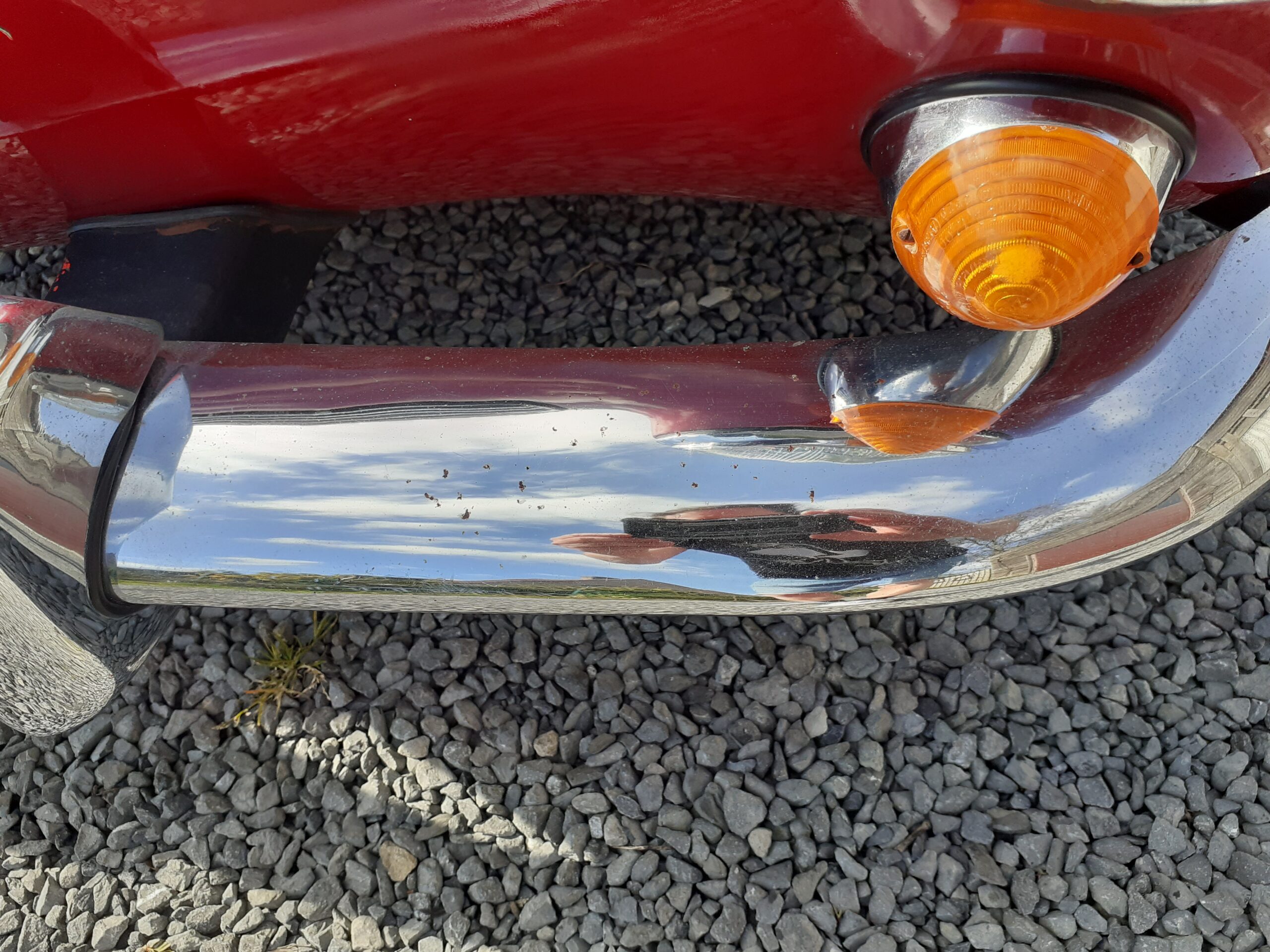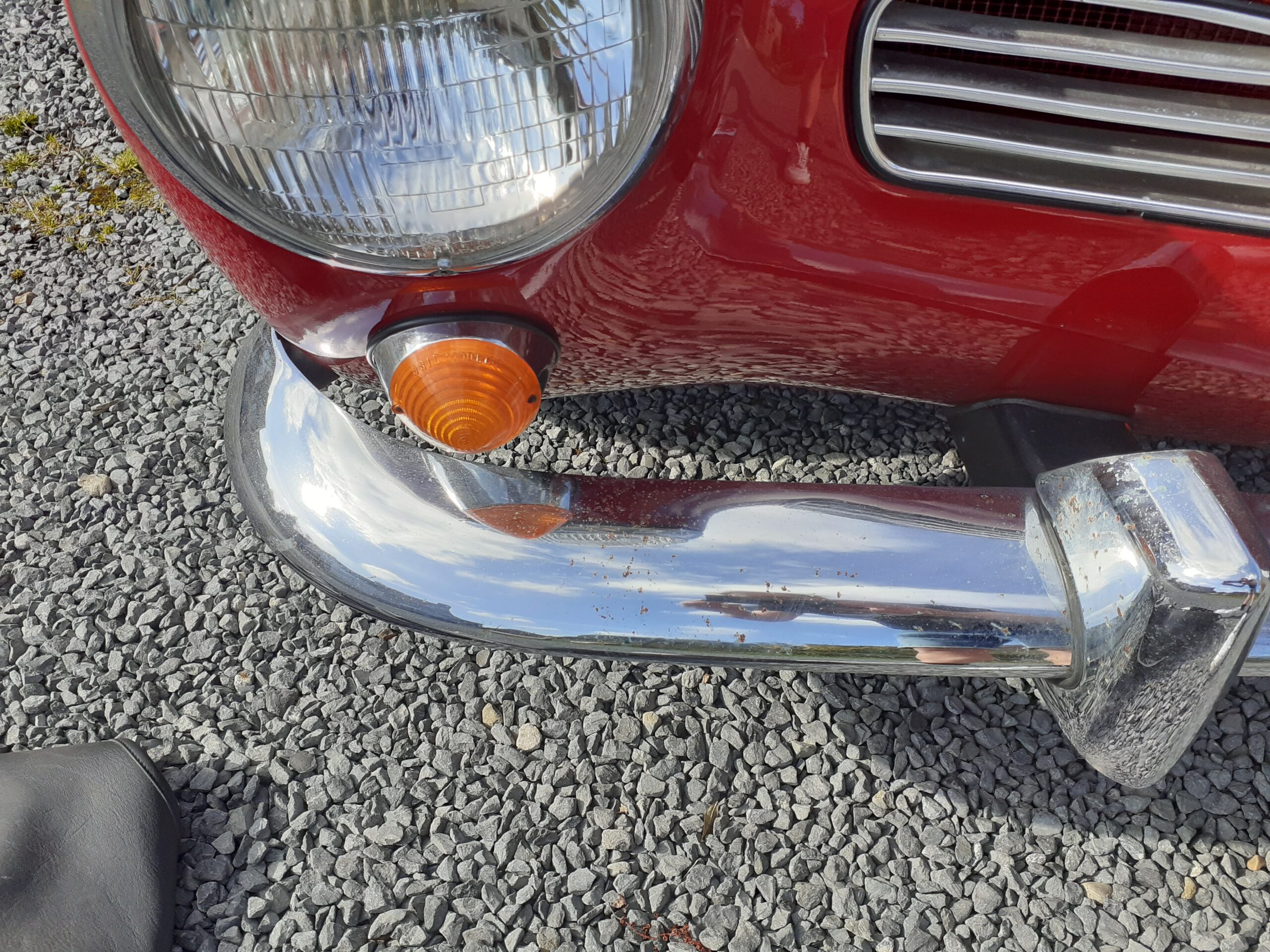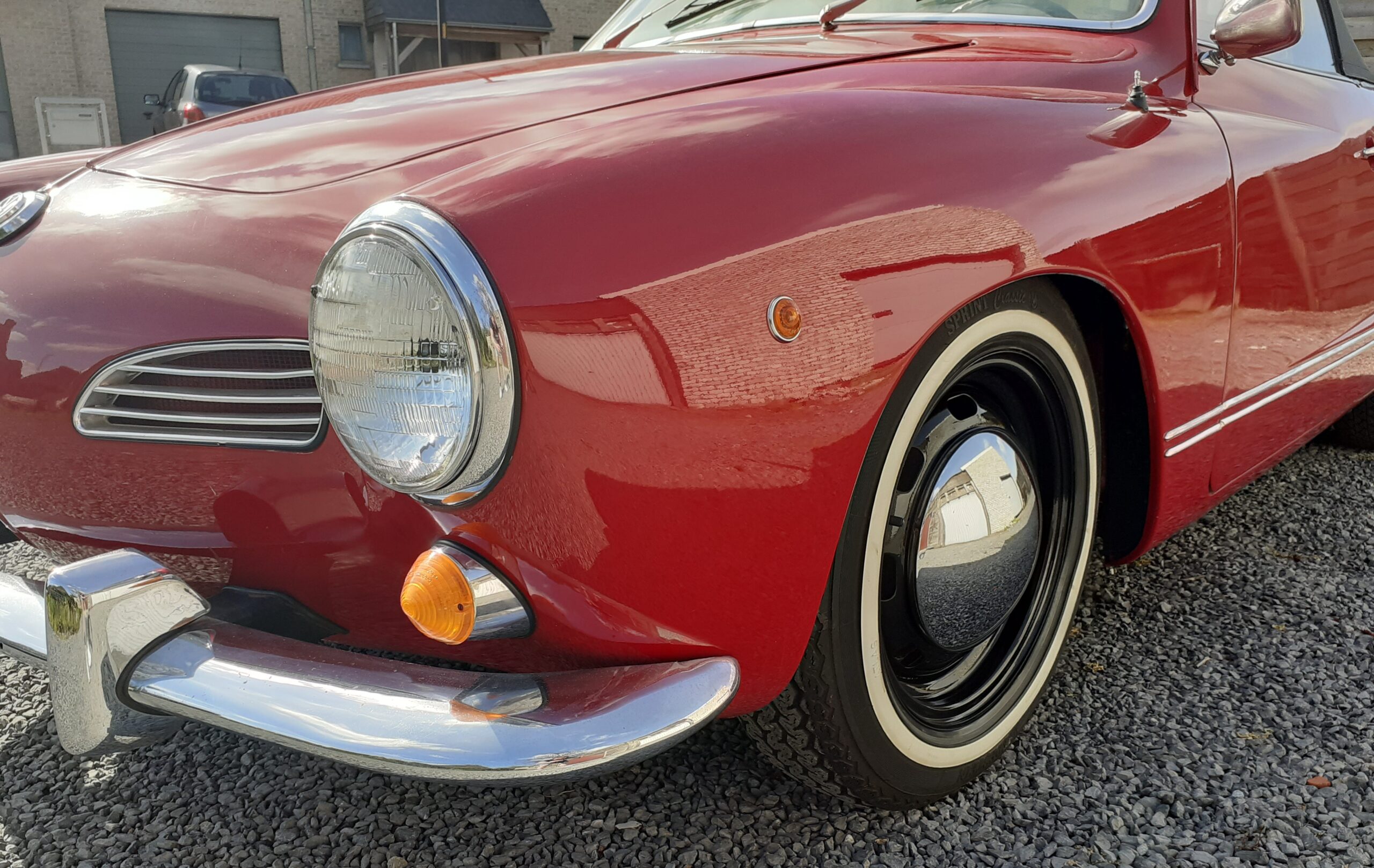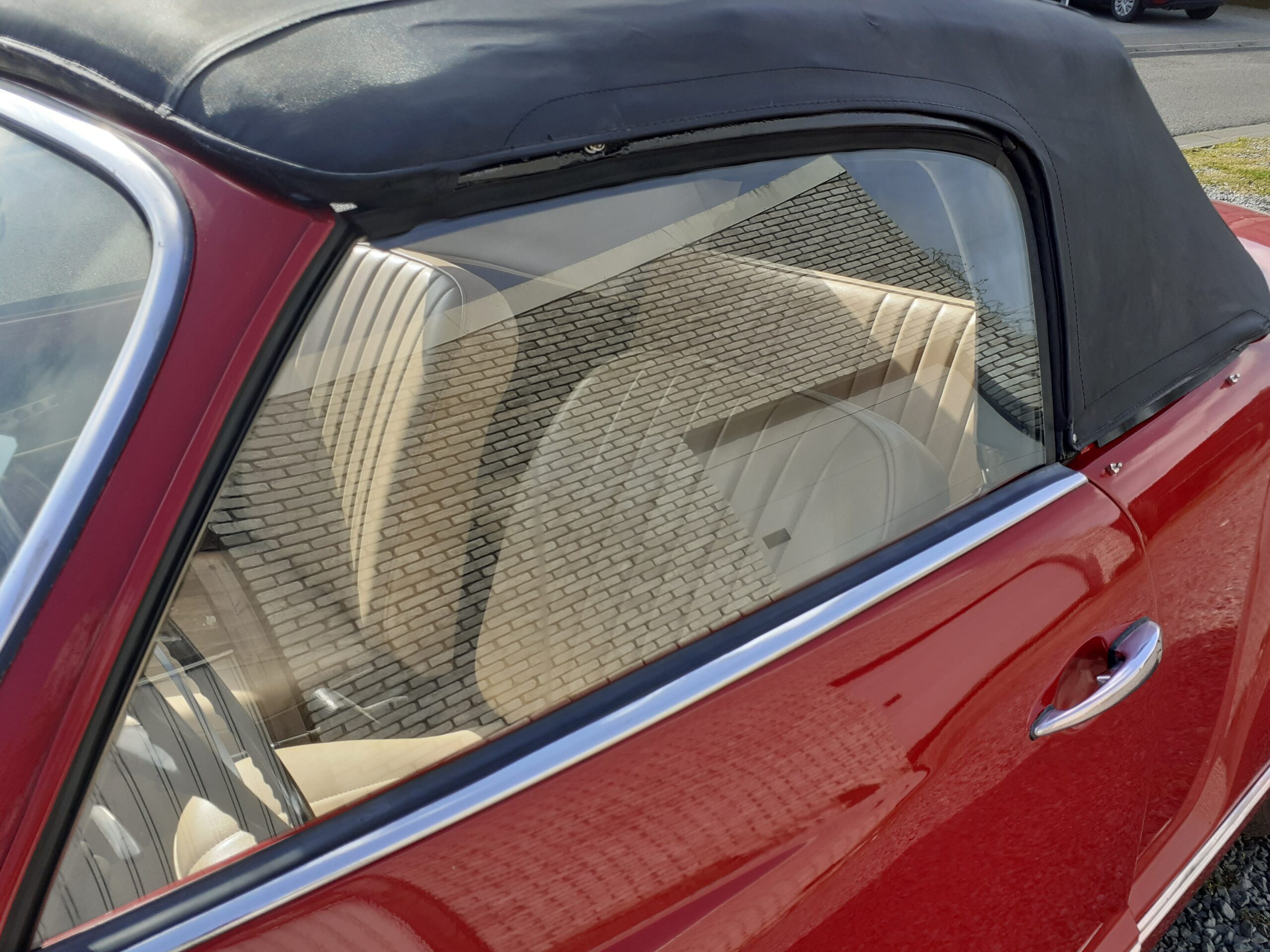Description
Volkswagen Karmann Ghia Cabriolet | 1969
Highlights:
- Rare pre-1970 model with smaller headlights
- Desirable red-black color combination
- Technically maintained with revised engine
- Original softtop with glass window still present
- Belgian registration and documented mileage
The seller offers for sale this 1969 Volkswagen Karmann Ghia Cabriolet, a classic known for its elegant design and timeless appeal. This particular example comes in a sought-after red-black color combination, contributing to its stylish presence on the road. Under the hood lies a 1600cc four-cylinder petrol engine, which is noted as the most performant engine option for this model, paired with a manual gearbox. Interestingly, this car was originally fitted with an automatic stick shift transmission, which has since been converted to a manual, a modification that may appeal to enthusiasts who prefer a more engaging driving experience.
Imported from sunny Florida in the late 1990. For a significant part of its time in Belgium, it was displayed in a Volkswagen garage as an eye-catcher, only occasionally taken out on the road under favorable conditions.
From a technical perspective, the Karmann Ghia has received attention to ensure its roadworthiness. The engine was revised several years ago, fitted with forged pistons, new bearings, and new seals. Recently, it underwent a major service including oil changes, spark plugs, and cables. The front suspension features lowered spindles for a sleeker look, complemented by new shock absorbers all around. The original spindles can be supplied if desired. Additionally, the front brake calipers have been refurbished and filled with fresh brake fluid. The car rides on four new tyres with whitewall covers, enhancing its classic appearance.
Regarding condition, the exterior presents generally tidy and in good shape. The car retains its original convertible roof, which is still watertight, although it does show signs of use. The inner headliner has been renewed and remains in nice condition. The paintwork is mostly smooth, though small surface scratches can be found here and there. There is no clear evidence of significant welding on the body panels, suggesting either careful repairs or a well-preserved structure. However, the floor pan has undergone welding work to restore its strength.
The interior has been refurbished in the past, including new carpets, seats, and door panels, and remains in neat condition. Notably, the sensitive dashboard panel is intact and free of cracks. Overall, the interior reflects careful use, with only minimal signs of wear.
Technically, the car is described as being in solid condition and holds a valid technical inspection certificate.
The Karmann Ghia, introduced in 1955, was Volkswagen’s answer to a stylish, sporty-looking coupe and convertible that retained the mechanical simplicity of the Beetle. Its iconic bodywork was designed by Luigi Segre at Carrozzeria Ghia in Italy and built by the Karmann coachworks in Osnabrück, Germany. This collaboration resulted in a car that combined the reliability of Volkswagen’s underpinnings with Italian elegance. The car was never intended as a high-performance sports car but rather as a more luxurious and fashionable alternative to the Beetle. Despite its modest power output, the Karmann Ghia found a strong following thanks to its beautiful design and refined driving experience.
By 1969, the Karmann Ghia had received numerous subtle updates but retained its original charm. Enthusiasts particularly appreciate the pre-1970 models, which feature smaller, lower-set headlights and cleaner bumpers, contributing to the car’s purer lines. Production of the Karmann Ghia continued until 1974, after which it was succeeded by the Volkswagen Scirocco as the brand’s stylish coupe offering. Today, the Karmann Ghia holds a solid place in the classic car world, valued both for its aesthetic appeal and the availability of parts thanks to its shared Beetle platform. Collectors often seek cars with original details and tasteful color combinations like this red-black example, especially convertibles, which remain among the most desirable variants.
Driving a Karmann Ghia today offers a distinct experience: a relaxed cruising pace, a charming air-cooled engine note, and admiring glances from onlookers who recognize the car’s graceful silhouette. It’s not a car for high-speed thrills but for those who value design, heritage, and the joy of vintage motoring.
Condition of the Bodywork and Paint
3. Good: Repairs to the bodywork and paint may be needed, possibly requiring part replacements.
Condition of the Interior
4. Very Good: Clean with minimal wear; may need minor replacements for small missing or broken parts.
Technical Condition
4. Very Good: Mechanically solid, with possible minor maintenance required.
Overall Condition
4. Very Good Condition: Shows only minimal wear and is ready to drive at any time.
This item is sold on an as-is basis. The condition of this item is the opinion of the seller and may differ from your own opinion. Photos and descriptions of the listing are for information purposes only.
We encourage all potential bidders to inspect the vehicle before placing a bid. Please contact us by phone or email to schedule an appointment.
All auction cars offered have a reserve price. You have only won the item if the seller accepts your bid.
Price changes and errors reserved. The 14-day right of withdrawal does not apply to this auction.
This car is currently located in West Flanders province, Belgium.
This car drives, brakes and shifts.
The car has a Belgian registration. The buyer is responsible for registration in his own country and responsible for delivery and collection of any vehicle purchased at the auction.
The description of this car is, to the best of the seller’s knowledge, accurate and not misleading. Route 66 Auctions requests a range of detail about the car from the seller and performs a level of due diligence. However, potential buyers must independently satisfy themselves as to the accuracy of the description. We strongly advise potential buyers to view or arrange inspections as well as conduct any research they feel is necessary before committing to bid or buy.
Please note that it is not uncommon for classic or collectible cars to have received cosmetic repairs in the past, to rectify damage or refresh appearance, and this work may be hard to see even upon visual inspection. Unless there is an explicit statement by the seller to the contrary, please assume that any vehicle could have had bodywork or paintwork. Photographs may not reflect the exact true colour or exact full condition of the vehicle. It is a bidder’s responsibility to assure themselves of the colour and condition of a vehicle, including its interior and the existence of any remedial bodywork or paintwork, before committing to bid or buy.

